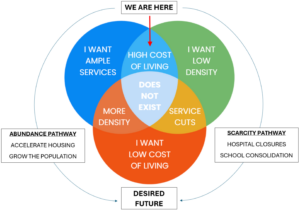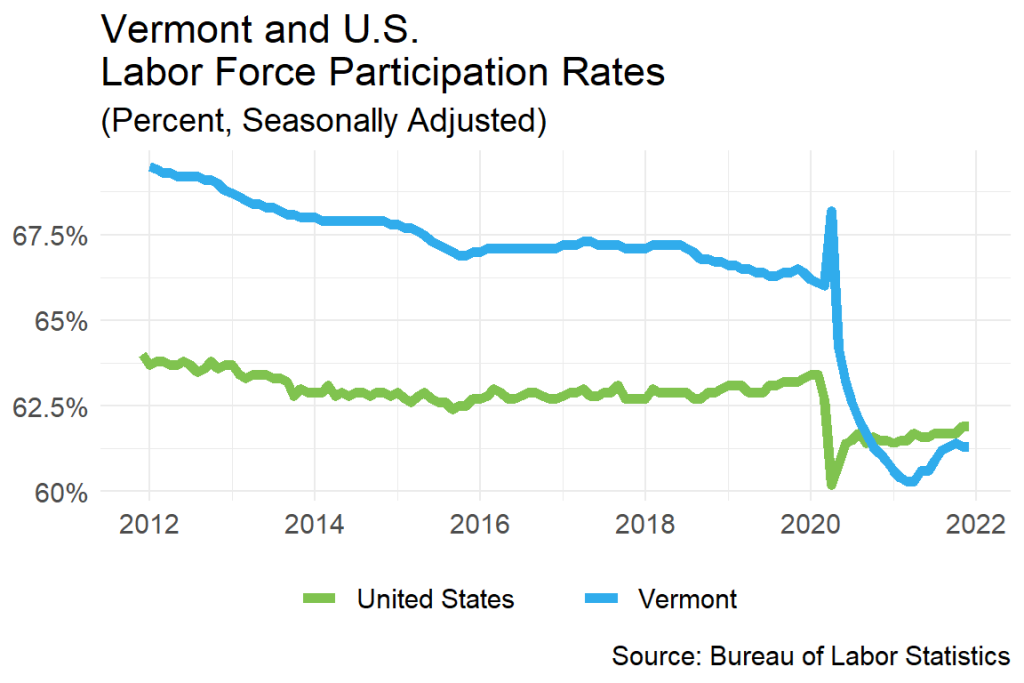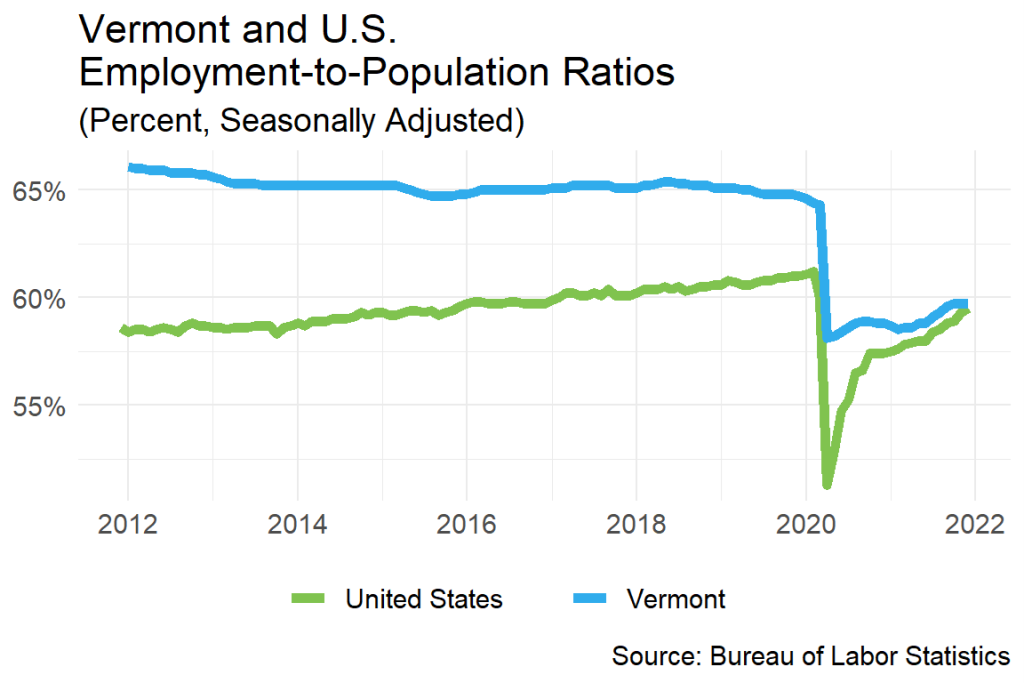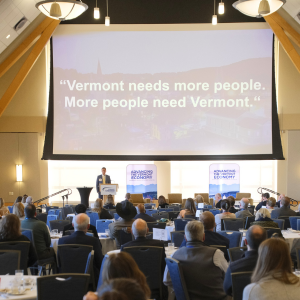
Part 2 – Labor force participation
This is part two of a four-part series that explores how population changes impact key aspects of the Vermont economy. In part one we discussed the importance of age composition. This article looks deeper into how labor force participation impacts the everyday economic life of Vermonters.
Labor force participation rate
The labor force participation rate is the percentage of the civilian non-institutionalized population age 16 and older who are employed or actively looking for work. The Vermont economy is highly influenced by labor force participation rates because lower labor force participation slows economic growth. Unlike the unemployment rate, this indicator includes people who are not seeking employment so it reveals any significant increase – or decrease – in people who have chosen to leave the labor force.
Historically Vermont had a higher rate of labor force participation than the U.S. average by about 5% but Vermont’s labor force participation rate has dropped from 70.2% to 66% during the past 10 years. Since the pandemic, Vermont has been lower than the US average. Vermont’s current labor force participation rate of 61.3 percent makes it tied for 30th in the nation. The Vermont economy is primarily driven by the working age population, so we are seeing the effect of the linkage between population stagnation and labor force participation. Demographics indicate retirements will keep rising over the next few decades which implies it is likely there will be further declines in the participation rate.
Vermont’s labor force participation rate chart is as follows:

Many people who are not in the labor force are either students or retirees. Family responsibilities can also keep people out of the workforce. A stay-at-home parent might be working very hard raising children, but that person is counted differently in the statistics and would not be part of the labor force. Similarly, a person with a disability who hasn’t worked or looked for work would also be considered out of the labor force.
Employment-to-population ratio
Although unemployment figures receive substantial media attention, many economists also track the employment-to-population ratio because it provides a broader view of labor market conditions. Whereas the unemployment rate, for example, excludes people who are not looking for jobs, but the employment rate captures this group in its measurement of population. This indicator measures the civilian labor force (everyone but military and federal government employees, retirees, discouraged workers, and some agricultural workers) currently employed as a ratio to the total working-age population. This indicator is not affected by seasonal variations and short-term labor fluctuations. This also includes unemployed people not looking for jobs.
A high employment-to-population ratio indicates that more of the working age population is employed, which in general will have positive effects on the GDP per capita. This ratio provides information on the ability of an economy to create employment. There are some limitations to this ratio as it doesn’t distinguish between part-time and full-time employment and isn’t concerned with wages, benefits, and job conditions. It is a useful indicator of current labor market conditions so lows in the employment-to-population ratio tend to correspond with economic downturns.

At 59.7 percent, Vermont is tied for 26th among state employment-to-population ratios in the nation. The Vermont labor force declined 8.4% between 2011 and 2021.
Some factors that may be causing this change include:
- Vermont’s workforce has been shrinking due to an aging population and low growth rate.
- An increase in educational attainment implies that people are spending more time in school so are putting off their careers until later in life
- In 2020 the workforce fell due to the COVID-19 pandemic and changing economic conditions.
Long-term changes in labor force participation can reflect bigger trends such as demographic changes and structural weakness in the job market that lead to increased work exits. In addition to an increase in retirement, some prime working age people have left the labor force. Some speculate that there is a skills-to-qualifications mismatch meaning there is a lack of skills employers are looking for so hiring is slowed. Others think there are a number of discouraged workers that have left the workforce due to circumstances surrounding the COVID-19 pandemic and childcare challenges.
How might labor force participation affect the state economy?
Employment is a major driver of state finances. A lower participation rate causes the state to have a narrower base from which to draw revenue so over time it could lead to higher tax rates or decreasing services. Changes in employment rates among adults in their prime working years can affect both sides of a state’s budget ledger as follows:
- Revenue: Paychecks generate income tax dollars. It also fuels consumer spending which produces tax revenue from sales and business income.
- Expenditures: People without jobs frequently need more services such as Medicaid health care coverage and other safety-net assistance. This can lead to increased government costs.
This four-part series is exploring the link between Vermont population change and the economy. In part three, we will discuss the age-dependency ratio that tells us about the burden placed on the working age population to support both old and young Vermonters.
MORE NEWS
JOIN THE MOVEMENT
Whether you’re a large or small business, an industry or a regional leader, you can help build the Vermont of the future. Sign up below to receive news and updates.



